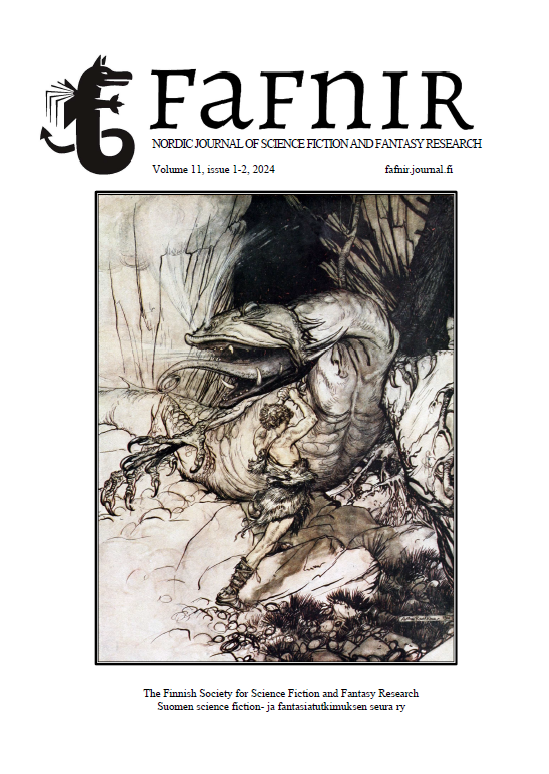SF Estrangement in Literary Translation
Translation of Neologies in the Finnish Version of Dune
Keywords:
translation, estrangement, neology, science fictionAbstract
This study analyzes the translation of neologies in the literary translation of the science fiction (SF) novel Dune (1965). As one of the most important linguistic elements in SF, neologies contribute to the worldbuilding of SF and create the estrangement from reality that is characteristic of the SF genre. Evaluating the translation of neologies is hence used as a tool to evaluate the transfer of the source text’s (ST) estranging properties to the target text (TT). When the ST’s neological estrangement is retained as a genre-specific feature of SF in the TT, the ST estrangement becomes accessible also for the TT reader. The study reveals that the translation has predominantly retained neologies, thus retaining the neological estrangement of the ST in the TT. The material of the study consists of the neologies in Frank Herbert’s Dune and its Finnish translation Dyyni (2021 [1982]), which were analyzed to determine whether they retain or recreate SF estrangement.
Downloads
Published
Issue
Section
License
Copyright (c) 2024 Suvi Korpi

This work is licensed under a Creative Commons Attribution-NonCommercial 3.0 Unported License.
Content in Fafnir is licensed under Creative Commons Attribution-Non Commercial 3.0 Unported License (CC BY-NC 3.0).
Beginning in November 2019, authors retain full copyright without restrictions. By publishing with Fafnir, authors grant a non-exclusive license to Fafnir to distribute the publisher’s version of the work, and give Fafnir permission to grant reprint and/or translation requests in accordance with our open-access policy and our Creative Commons license.
Prior to November 2019, copyright for all published material is held by Fafnir, but authors have full permission to use their work as they wish (i.e., self-archiving, reprint requests, using for other projects, etc.).
In both cases, re-use or re-posting of material published in Fafnir must acknowledge original publication and include a link to the publisher version.


